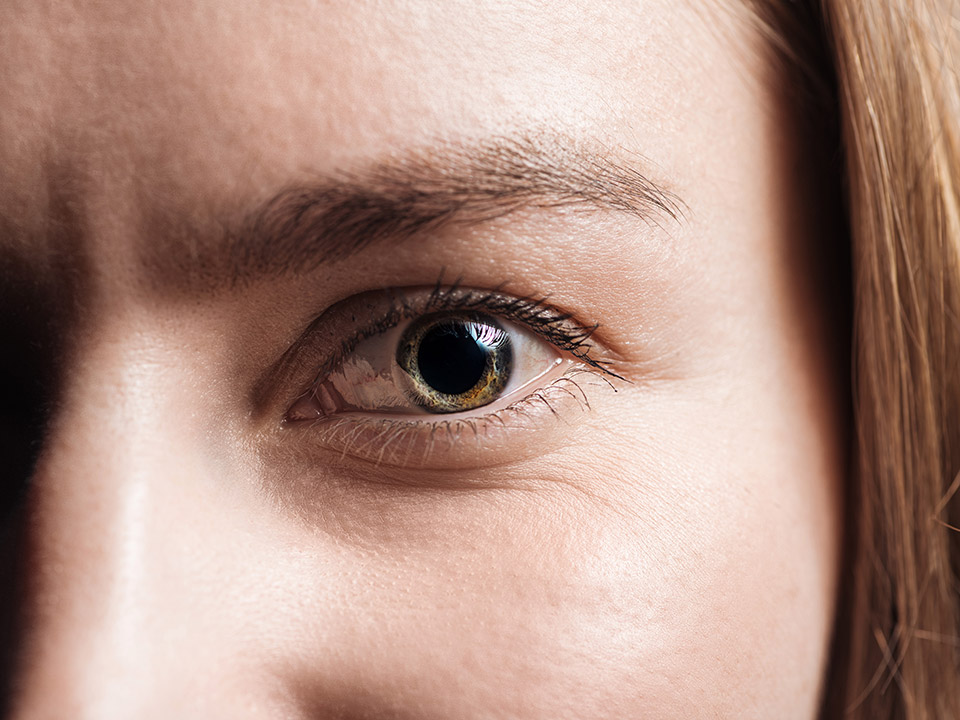Can Eyes Change Color?

Have you ever noticed a change in your eye color? Did they appear darker brown one day and look lighter the next morning? Eye color is an intriguing phenomenon. However, when one’s eyes suddenly change color, or even gradually over some time, the intriguing wonder that is the color of the human eye becomes even more fascinating.
How does the color of your eyes change? And where does eye color even come from? Do outside factors determine the color of your eyes? Or do color changes just happen naturally? The information below provides detailed answers to these questions. In addition, it will explain a few other important factors about eye color.
How Does the Color of the Eye Develop?
For a long time, most people believed they could predict their child’s eye color by looking at their grandparents’ and parents’ eye color. Grounded on the belief that blue eyes are recessive and brown ones are a dominant trait, one could get a rough idea of their kid’s eye color.
Today, we know that determining eye color is more complex than just looking at the grandparents’ and parents’ eyes. While genetics does have an important role to play in all this, eye color is not determined by a single gene. Several genes take part in helping determine the color of your eyes.
A person’s eye color is determined by the distribution and amount of melanin in their irises. Blue eyes have less melanin than brown, and there are a lot of different color shades in between. Darker-colored eyes often tend to be more dominant. However, as different genes come into play, darker colors do not always win.
A baby is likely to have blue eyes right after birth. They have this eye color because they still lack enough melanin in their system. However, once they get exposed to light, their bodies will start to produce more melanin which will, in turn, change the color of their skin, hair and, of course, eyes.
So, while two people with brown eyes have a higher chance of producing a brown-eyed child, the result is not guaranteed.
Roughly half of the United States population have brown eyes. In addition, it is also an eye color that is prevalent in places with warm climates.
Blue-eyed people lack melanin in their stroma, the iris’ front layer. This lack of pigment causes light rays to scatter once they hit the eye, giving the irises a blue appearance.
Can the Color of Your Eyes Change?
The color of a person’s eyes can change in infancy. Most children are born with blue eyes, but the color gradually changes as they develop melanin in the stroma. After the first birthday is when a child’s eye color becomes permanent.
Besides this, it is rare for the color of one’s eyes to change. They may look like they changed color when their pupils shrink or dilate, but this happens because the color pigments in the iris spread apart or come together.
In some scenarios, the color of the eyes can slightly darken during pregnancy or puberty or as one reaches their senior years. If not, you need to consider the possibility of an underlying medical condition tampering with your eye color.
Health Conditions That Affect Eye Color
Sometimes, health complications can change or affect a person’s eye color. Some of these health problems include:
- Trauma- Any eye trauma or injury can damage the iris. Any tissue loss can also change the color of your eyes.
- Neurofibromatosis- This condition affects the body’s nervous system. It can result in tiny tumors growing on nerve cells all over the body. Additionally, it can cause small nodules to appear in the iris. These are Lisch nodules and generally harmless growths. While they will not affect one’s vision, they can change their eye color.
- Fuchs’ heterochromic iridocyclitis- Also commonly referred to as FHI, this health complication is a kind of chronic uveitis. It can cause atrophy of your cataracts, iris and eye inflammation. This medical issue can also lead to the loss of pigment, resulting in a change of eye color, leading to heterochromia.
- Uveitis- Uveitis is a group of inflammatory infections and diseases that cause the eyes to swell. It can affect one’s vision and even result in permanent blindness. You might also notice a few color changes in the affected eye.
- Cataracts- Cataracts are the clouding of the lenses of the eyes, which are found behind the pupils. While a cataract does not directly affect the iris, it can change the eye color appearance of the affected eye, making it look milky or cloudy. Cataracts can affect vision and change the color of one’s eyes. However, they are more common in older people.
- Horner’s Syndrome- This is a rare medical condition that might occur because of a spinal cord injury or a stroke that damages a person’s facial nerves. Signs and symptoms include eyelid drooping, pupil constriction, and not being able to sweat on one side of your face. It can also cause iris depigmentation, which results in eye color change.
The Takeaway
According to eye specialists, the color of one’s eyes does not just change on their own. Instead, there are multiple external factors, as well as genetics, that determine how eye color appears.
Therefore, unless you have noticed sudden, drastic changes in the eyes, there is nothing you need to worry about.
However, if there has been a sudden and extreme change in your eye color, you need to consult an eye specialist as soon as possible. This rapid color change might signify something more severe that only a physician can diagnose, manage and treat.
Our establishment has qualified specialists who can accurately determine what is causing your eye color change. From young babies to seniors, we treat them all. Therefore, if you notice a sudden change in eye color, do not hesitate to visit our establishment for immediate assistance.
We offer diagnoses, and treatments, including eye surgeries that improve and preserve your vision. Get in touch today.




